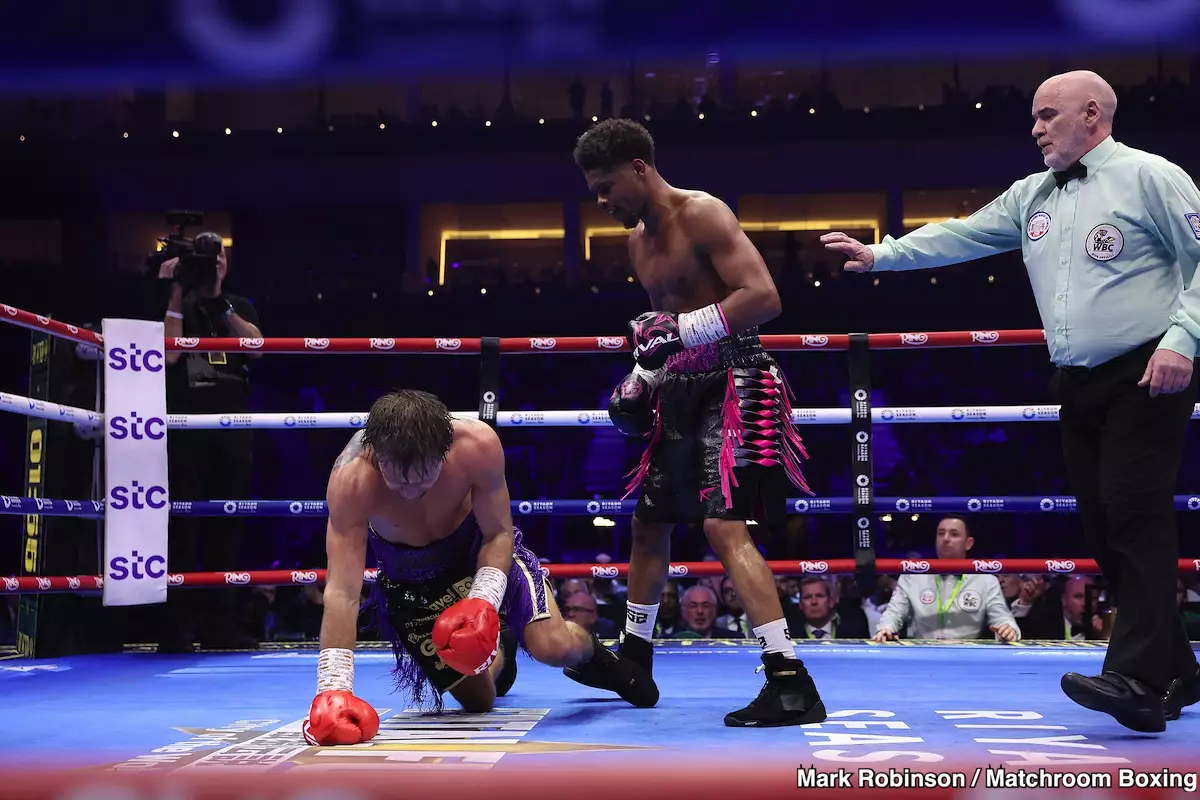The world of professional boxing is frequently stirred by opinions and insights from fighters themselves. Recently, Rolando “Rolly” Romero made headlines by critiquing a potential match between Gervonta “Tank” Davis and Shakur Stevenson, the current WBC lightweight champion. His outspoken remarks not only reveal his feelings about these prominent fighters but also underline some considerable truths about their fighting styles, marketability, and the overall boxing landscape.
Gervonta Davis, with his impressive record of 30-0 and 28 KOs, has established himself as one of boxing’s most dangerous punchers. His explosive fighting style is revered; fans flock to arenas to see him deliver jaw-dropping knockouts. Most importantly, Gervonta knows the value of good matchmaking—he fights for compelling challenges that promise both competitive thrill and substantial financial rewards. His strategic market positioning suggests he won’t entertain matchups that may leave audiences dissatisfied or invoke scattered boos.
Indeed, Rolly Romero’s statement about Davis’s reluctance to face Stevenson unless faced with a significant payday resonates well within the sport’s commercial sphere. When elite fighters like Davis are forced to chase opponents around the ring, the entertainment value diminishes. This is why Romero believes that Davis would be wise to sidestep a contest with Stevenson until the latter proves himself with knockouts. Romero’s analysis is an astute commentary on the business dynamics that govern high-stake boxing matches.
Shakur Stevenson, with his pristine record of 23-0 and 11 KOs, undoubtedly has commendable accolades to his name. However, Romero’s critique hinges on his performance style. Romero posits that Stevenson tends to shy away from aggressive confrontations, suggesting that Stevenson even “jumped around the ring like a grasshopper” during his fight against Edwin De Los Santos. This characterization speaks volumes about Ramos’s view of Stevenson’s cautionary fighting approach.
In a sport where power and aggression often define success, Stevenson’s emphasis on technique and finesse has drawn mixed reactions. While Romero admits to Stevenson’s brilliance as a technical fighter, he also insinuates that this prowess may not translate to audience-pleasing combat. The question arises: should Stevenson adapt his style to deliver the explosive finishes that fans crave? Romero suggests that Stevenson may need to shift gears—specifically, he proposes a prerequisite of achieving three knockouts before Davis would even consider the bout worth his time.
Moreover, it is essential to address the elephant in the room with Stevenson’s recent injury issues. Romero’s comments on Stevenson re-injuring his left hand and avoiding its use during fights pose questions about Stevenson’s readiness to engage in the high-stakes battles that define champions. Injuries are a significant factor in boxing, and a fighter’s capacity to compete effectively can influence their financial and reputational prospects. Rolly Romero, displaying a mix of sarcasm and critique, suggested that Stevenson’s reluctance to engage fully might also reflect his injury woes—implying Stevenson could “jump out of the ring” to avoid a knockout.
The implications of Romero’s analysis also extend into further discourse on marketability. Boxing matches are not merely battles in the ring—they are meticulously crafted events designed to draw in viewers. Fans yearn for something that excites them. As such, potential bouts must marry skill with an element of unpredictability—something Romero believes is lacking if Stevenson fights with reluctance.
To catalyze a match between Stevenson and Davis, growing interest from the public may be necessary. Romero’s insights cast a shadow on Stevenson’s ability to deliver compelling performances that capture the light and excitement of boxing’s more thrilling narratives.
Rolando Romero’s critique of Shakur Stevenson and Gervonta Davis highlights the complex weave of talent, style, marketability, and the ever-shifting dynamics in boxing today. Fans crave more than technique; they desire action, drama, and certainty in an age when the stories behind matches matter as much as the fights themselves. For Stevenson, the call for knockouts may be the wake-up call he needs to elevate his game and restore attraction to a potential matchup with Davis. After all, boxing’s allure lies not just in victory, but in how that victory is achieved.

